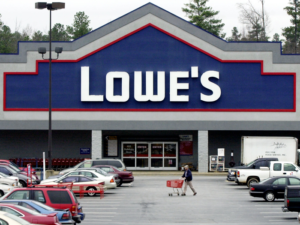
Startup traction is the momentum that a startup has. It’s defined as “the degree to which new products, services or technologies are adopted by customers.
What is Startup Traction? Startup traction describes the amount of attention and interest a new venture gathers. It’s an important aspect for any company to measure, as it can reveal how successful your business will be in the future. In this article, we’ll show you three different ways to increase startup traction and help you get more people interested in your business.
Jump Ahead To :
What Really is Startup Traction?

Startup traction is what all new businesses strive to achieve. Startup traction entails the successful launch of a startup, which includes having customers using your product or service on an ongoing basis. Startup traction can be achieved by increasing sales numbers each month, acquiring more subscribers for monthly subscriptions, getting more downloads of mobile apps and engaging users through social media. Startup traction can be defined as either a user-growth rate or sales growth. Startup founders will often ask themselves, what is startup traction? A startup’s success can depend on its ability to answer that question and launch with the right numbers.
It is the first step to starting a business that has real potential. Startup traction, also known as growth hacking, can be defined in two ways: quickly achieving product-market fit and customer validation using technology-driven methods.
Startup traction is the quantitative evidence of your startup’s growth in customer/user base. Startup traction can be achieved by gathering data about user behaviour, market-fit survey feedback and business metrics. Startup founders should focus on finding real customers for their products before they scale up marketing efforts. The earlier you find product-market fit – the easier it will be to grow your user base through word of mouth or virality!
Startup traction might not always mean that a company has seen explosive growth but rather steady, slow, but consistent progress over time with growing numbers of users signing up each day via organic traffic sources (e.g., SEO). For example, while some startups may have had early success at launch get featured on TechCrunch within one week, they might not have had great traction. Startup founders should always check for product-market fit before scaling up by spending more on PR or marketing! Startup traction can be measured in different ways:
- By number of users (e.g., active users) – this includes user engagement metrics like monthly/daily active users and retention rates;
- By revenue growth rate;
- Other startup metrics that are important to the success of your business, such as conversion rates, average order value etc.
Startup traction is also identified through qualitative customer feedback from market research activities like surveys and interviews with current customers. Successful companies need at least 40% positive feedback while getting customer reviews; their products online will help you get more traction! Startup founders can also determine whether their business is getting the right kind of attention by tracking mentions on social media and in traditional news outlets. Startup traction requires long term commitment to building your startup with dedication, perseverance and patience without giving up too quickly if you don’t see immediate success.
Startup traction will not happen overnight – it takes time for customers/users to become more familiar with a product or service before they are willing to pay for it. Don’t expect growth at any cost but rather focus on improving your existing products/services over time-based on user feedback to keep coming back each day because they value them!
Importance Of Startup Traction

The importance of startup traction is that it can be used to validate the business idea. Startup founders are looking for feedback from potential customers, and Startup Traction helps them get this feedback by letting users sign up early on in the process. This also makes it easier for Startup Founders to sell their product or service because they already have demand coming in. Startup Traction allows entrepreneurs to build a Minimum Viable Product (MVP) which is important as you do not want your first version of your product or service to fail due to lack of interest.
Startup traction includes things like Search Engine Optimization (SEO), getting press mentions, social media presence, etc. – many more factors than just user growth! It’s very important to be aware of Startup Traction as it is something that all Startup Founders should keep in mind.
Startup Traction is very important, and Startup Founders should be aware of it. Startup traction can also let Startup Founders know when their product or service has reached a stable point, which happens after about three years in most cases.
Startup Founders can use Startup Traction to validate their business idea, making selling the product or service easier. Startup Founders should be aware of all types of Startup traction as many factors go into it!
What Does Traction Mean For Startups?

Traction has a couple of different meanings depending on using it in a marketing or sales context. Still, when we talk about Startup Traction, we use this idea: Startup Traction is product/market fit and metrics that demonstrate growth by indicating users love what they have enough to recommend (word of mouth). If you don’t have early signs of startup traction, no one will probably care if your company dies tomorrow because no one cares today!
Also, Startups are all about growth. Startup founders know that, but they also need to prove it to convince investors and others of their business idea’s merit. Startup traction is the best way for startups to showcase their value proposition because it shows potential customers or users what problem your startup can solve right now with today’s technology. Traction is often seen as a sign of success early on, which means you have something tangible to present when raising money from angel investors or venture capitalists (VCs). In addition, if you already have some product-market fit, then your odds of raising money go up significantly!
When considering whether a company has “traction”, look at these three components: interest, usage and sales. Startup founders should focus on their product or service’s ability to create interest, inspire users with its features/benefits, and ultimately lead to conversions (i.e., generating revenue).
Types of Startup Traction
Traction is a concept in Startup Marketing. Startup Traction refers to the process of measuring and gaining user traction for your startup company or idea. There are many ways to measure this, but it all comes down to users using your product/service on some level. Whether they purchase products from you, donate their time (to view videos), keep coming back (like Facebook) or refer others (like Instagram). Startup Traction is also referred to as Customer Validation because we’re validating our assumptions about the problem we solve and how people will use our product. Startup Traction can be divided into five main types:
- Users
- Engagement
- Revenue
- Growth rate
- Network effects
It is important to use all these different types for your startup to be successful so it can become a unicorn company. Startup founders should try out as many avenues as possible, each being an experiment with its outcome, leading them towards success or failure.
Startup founders should focus on the users first; this is because they are your most valuable asset. Startup founders will need to create a product that people want and fill their needs to be satisfied enough without making any changes or improvements. If startups can achieve a growth rate, they can start focusing more on revenue by working on monetization techniques like advertisements, memberships, etc. Startup founders might also try out network effects if they believe that there may be some hidden value within them. These types of traction work best when put together because one type influences another, making startup’s chances of success higher than before.
Types Of Startup Traction Metrics
Generating revenue
Generating revenue as a business traction metric can be difficult, but it gives us an idea of what we should do next to improve our business for more money and customer growth. If there aren’t enough customers, then perhaps that business has failed already, which means they need to go back into the “pivot” stage again where they change their product until it works properly.
Innovation
Innovation is a business traction metric that can help you measure the growth of your business. It’s important to define innovation as a business traction metrics because it will indicate how well or not your business is doing at innovating and implementing new technologies into its business model. Innovation as a business traction metric isn’t about creating more products but looking for ways to improve existing ones by applying technology to make them better over time with continuous improvement initiatives within the industry they are operating in.
Online traffic and engagement
Online business traffic and engagement is a business traction metric used to measure how well your business website or product performs.
It’s important to understand the difference between user acquisition, user retention & increased revenue when it comes to online business metrics that you track.
When measuring success in any business venture – knowing which goals are being met by the activity happening on your site/product is vital for growth and improvement of performance within an industry. Metrics such as the number of active users, new signups per month, etc., can be useful, but what matters most in achieving business milestones (i.e. meet certain targets) will always come down to one thing: Revenue!
Media presence
Media presence as business traction metrics is the best way to know if your business is on track. People are constantly looking for new information about what you have achieved so far and how it makes them feel better. Media presence can be measured in many ways, including social media reach or engagement rate of certain content on the internet. If people talk about you online, that means they care about your product/service enough to do all this work themselves too!
How to create and measure traction

Traction, also known as growth, describes how a company or business captures customer attention through marketing efforts. You may be thinking that traction means getting more sales, but actually, there are different ways of measuring it, such as how many people sign up for an app daily? How many people follow your social media account every day? How do you know if your business is growing or not, and what should be the benchmark that determines whether it’s gaining momentum?
There are dozens of metrics companies use to measure their growth, but few matters. Here’s a look at how some of today’s hot technology startups like Uber and Airbnb did it: They got off the ground by solving an immediate need in a straightforward way (hello! there was no UBER without smartphones) while also creating undeniable excitement around themselves through branding. This led users to take action on social media, where they could share their love with friends. The key here is that these founders were getting early adopters to spread the word about their product and build a foundation of passionate users.
How do you measure traction? Traction is typically measured by startup founders when they’ve reached some version or level of it (i.e., paying customers, downloads), but knowing where exactly on the scale you are can be pretty tough! The most common metrics used include:
- Monthly Recurring Revenue (MRR) – How much money your company makes each month, also known as “Run Rate.” While MRR doesn’t directly reflect growth or revenue, this number helps founders determine what kind of cash flow they’re discussing for their businesses. It allows them to estimate future expenses and project how quickly the business will up if certain milestones are met.
- How many downloads or reach you have – How many people installed your app, bookmarked your website, etc. This can be helpful when trying to separate the chaff from the wheat and prioritize marketing efforts where they’ll do the most good. It also tells founders whether their goals are realistic if growth continues at this pace.
Final words
So, what are you doing to increase your startup traction? It’s not too late. There is still time for you to make changes and achieve the level of success that will make all those long hours worth it. We can help with SEO or marketing strategy development if needed; just let us know how we can assist!






